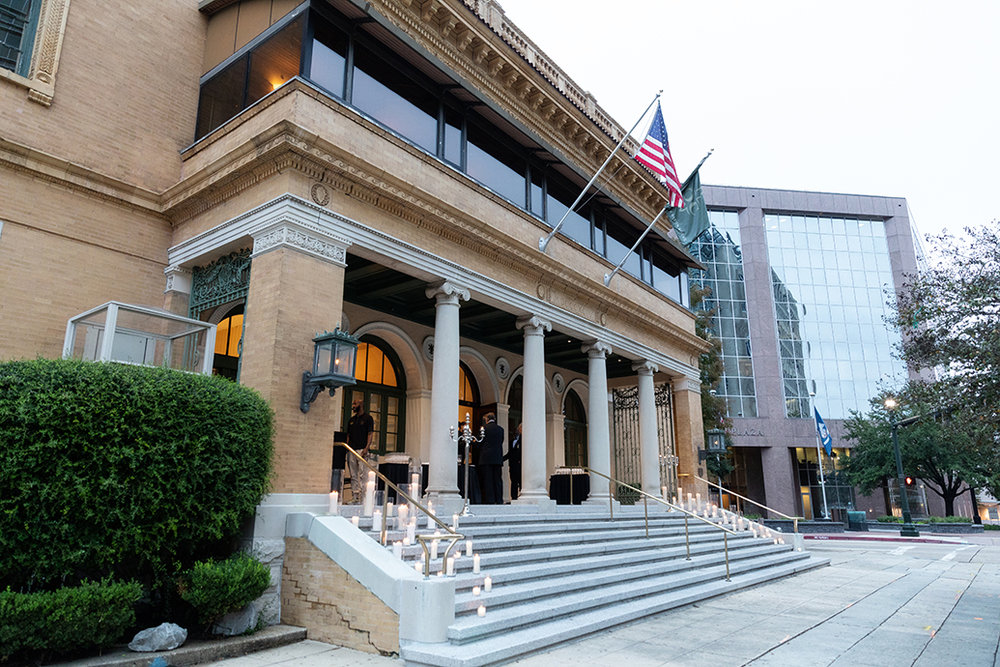It’s been just over 30 years since businessman Eddie Rispone received what he has termed “life-altering advice” from his dear friend and fellow construction mogul, Lane Grigsby.
Grigsby has himself called it “the best advice I ever gave anyone.”
What were these magical words?
“Liquidate all your stock and start your own business.”
The sanitized version of the story, offered as part of Rispone’s biography in his current run for Louisiana governor, says in the spring of 1988, Rispone was becoming increasingly dissatisfied with his quality of life. He’d been working for the same company, Matthews-McCracken-Rutland, also known as MMR Corporation, since 1975, and had risen to become its vice president, acquiring stock in the company when it went public in early 1987. Yet he had reached “a tipping point”, and Grigsby’s advice was the answer.
Rispone, then approaching age 40, sold off some 27,000 shares of MMR stock from April through July of 1988, resigned from MMR, and in early 1989 started ISC Constructors.
Perhaps it was truly as innocuous as a manifestation of mid-life crisis, coupled with sound advice from a trusted friend, resulting ultimately in solid business success.
Yet what is not mentioned now in 2019 are the other things going on with Louisiana’s Erector Set – and Rispone’s world, in particular – in the late 1980s. Grigsby’s advice may have saved Rispone’s ass, helping keep his name and person out of a notorious federal court case developing at the same time.

In November 1988, the U.S. Justice Department indicted MMR, its former chairman Robert McCracken, and its president James “Pepper” Rutland on charges of bid-rigging the 1981 contract for building the second Big Cajun electric power plant in New Roads.
In May 1989, MMR and Rutland were convicted. All appeals were ultimately denied, and Rutland ended up serving six months in federal prison.
Rutland and Rispone – along with Art Favre, Performance Contractors’ CEO and Erector Set activist – were graduates of LSU’s inaugural Construction Technology class in 1972. In 1975, Rutland recruited Rispone to come to work for MMR.
MMR (then and now) does the same type of work Rispone’s ISC Constructors now specializes in – electrical construction and mechanical control planning and installation. By early 1980, MMR had built its business and reputation sufficiently to be included on the “invitation-only” bid list for construction of Big Cajun 2, a coal-fired electric power plant project in New Roads. MMR’s people met with electric company executives and drafted preliminary plans for the project.
But one of the national contracting firms on the bid list – Fischback and Moore, then the nation’s largest electrical contracting firm – was very much interested in getting the job themselves. According to court records, as was customary with several of the biggest national firms, “in March 1980, representatives of several large electrical contractors, including Fischbach and Moore, Inc., had a meeting at which they discussed allocating future electrical projects,” and agreed to submit higher bids so F&M would win the Cajun contract. The only thing standing in their way? That local upstart, MMR.
F&M’s southeast regional director Paul Murphy and that company’s New Orleans branch manager J.R. Sturgill arranged a meeting with MMR’s Robert McCracken and James Rutland. They met at the posh and private City Club in Baton Rouge, on December 19, 1980.

Murphy and Sturgill explained to the MMR executives that the other national firms had already agreed to let F&M be the low bid, and MMR needed to overbid, as well. McCracken and Rutland countered with an offer that MMR partner with F&M on the bid. But that wasn’t how the big boys played this game, and negotiations stalled. Murphy and Rutland took a breather.
Then, according to additional court records, “Murphy and Rutland announced, upon returning from the men’s room, that they had a deal.” In exchange for not bidding at all, MMR would be cut into F&M’s deal on Big Cajun, as a subcontractor. In addition to the money they’d earn for the work, MMR would get a $1.5-million “fee” as part of the “deal”.
Indeed, that’s how the deal to build Big Cajun Two went down – and how Rutland and MMR went down, causing Rispone (presumably) to worry in the late 80s about going down himself.
For just about the time Rispone began fidgeting about his future in the fall of 1987, the U.S. Justice Department issued subpoenas for MMR’s records regarding their dealings with Fischbach & Moore on Big Cajun, and a previous deal done with F&M at the Strategic Petroleum Reserves in Hackberry. At that point, F&M’s bid-rigging habits had become widely known through a series of well-publicized federal indictments and criminal cases across the country.

In June 1983, a federal grand jury in Seattle indicted Fischbach & Moore, the Howard P. Foley Co., and the Lord Electric Co. for conspiring to rig bids on four nuclear power plants in Washington state, and one in Indiana. In early July 1983, the same trio of companies was indicted by a federal grand jury in Pittsburgh, for conspiracy and bid-rigging on projects at eight U.S. Steel Corporation plants.
It is noted in the documents of the Pittsburgh case: “For approximately seven years, from 1974 to 1981, representatives of several electrical contracting companies met at the Duquesne Club in Pittsburgh. The purpose of these meetings was to decide among themselves which firm would receive the contract. That firm’s representative would contact the other contractors and would tell them what bid to submit, ensuring that his firm’s bid would be the lowest. Some of the firms kept track of the allocations to ensure that each contracting company received its fair share of work.”
And in August 1987, the U.S. Justice Department filed suit in Chattanooga, Tennessee, alleging Fischbach & Moore conspired with officials of Nebraska-based Commonwealth Electric Company to rig the 1980 bids on the Moccasin Bend waste treatment plant in Chattanooga. F&M’s Paul Murphy was also named in that case.
With the exception of Securities and Exchange Commission filings showing Eddie Rispone selling 27,000 of the 108,000 shares of MMR stock he owned in 1988, none of the federal documents currently available mention Rispone in connection with either MMR or the criminal cases.
He was, however, a company executive at the time, and undoubtedly supervised the Big Cajun and Strategic Petroleum Reserve projects, even if he was not the one designing and crunching the numbers of the bids and contracts.
James “Pepper” Rutland served his six months, paid his federal fines, and once MMR reorganized under Chapter 11 bankruptcy in 1990, resumed the position of CEO of the company, now known as MMR Constructors. Inc.

MMR Constructors headquarters is on Airline Highway in Baton Rouge, next door to Grigsby’s Cajun Industries HQ.
Rutland has not been a heavy political contributor. Neither he nor MMR have given to Rispone’s or Grigsby’s PACs, or to Rispone’s gubernatorial campaign – yet. (Grigsby and Favre have chunked in some change, though.)
Neither Rutland nor MMR have been contributors to LABI’s PACs.
What did Eddie know in the 80s? Did Grigsby’s advice save Rispone’s reputation and his ass?
We may never know.
Yet there’s something from the many court documents in the MMR case that stands out as food for thought now, thirty years later.
“At the sentencing hearing, Judge Mentz stated that he could not view the conspiracy for the Big Cajun bid in isolation, because the testimony adduced at trial showed that Murphy and Rutland had worked together to rig previous bids. He noted that MMR had earned a sizable profit as a result of its agreement with F & M, and that ‘apparently these deals were one of the reasons that MMR became so successful over the years’.”
